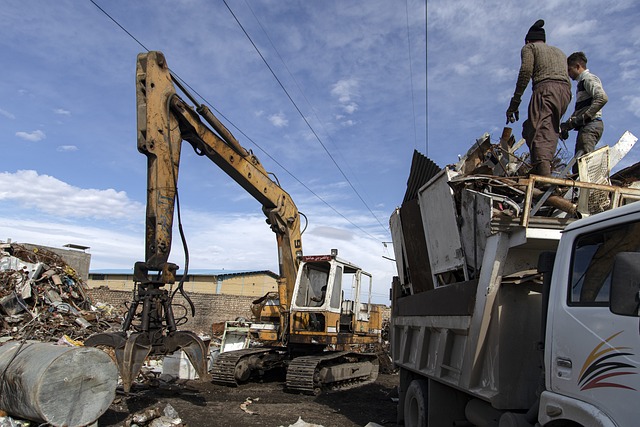
There is a lot of latent energy in our waste. Whether that energy is turned into renewable fuels or clean electricity, it can reduce carbon emissions and resource depletion. The adage, ‘one man’s trash is another’s treasure, applies to the world of waste management. From waste segregation to state-of-the-art WTE plants, innovative technology is helping transform trash into valuable resources.
Advanced Sorting Technologies
Reducing the quantity of waste in landfills and fostering a more sustainable society are both possible with advanced sorting technology for waste management. These systems are designed to identify and separate materials with a high level of precision, resulting in increased material purity for recycling. They can also adapt to new input streams and contamination levels.
Intelligent bins that can communicate with one another over the internet by utilizing sensors to identify a range of parameters, including weight, humidity, gas emissions, and the degree to which waste is filled, are an example of this technology in action. This information can then be sent to a central server for analysis and action. For example, when a bin is complete, it can alert the relevant authorities and prevent an accident from happening.
Plasma gasification is another technology that is gaining popularity. It treats hazardous wastes and converts them into non-hazardous slag using highly ionized gases. This process is eco-friendly and produces no dioxins, furans, NOX, or sulfur dioxide. It also helps reduce greenhouse gases by converting waste to energy rather than burning it.
Other advances in sorting technologies include the integration of artificial intelligence (AI). The purity of recycled materials can be increased using these systems to distinguish and isolate various plastic types according to their chemical makeup. They can also adapt to new inputs and learn from each other, reducing the need for human intervention and improving operational efficiency.
Biofuels
The use of biofuels is a growing area of interest. These fuels are made from plant and algae materials that can be replenished quickly, making them an alternative to fossil fuels like gasoline. However, biofuels also create greenhouse gases and can contribute to land degradation. To combat these problems, companies are investing millions in advanced biofuel research. These efforts aim to transform plants and algae into transportation fuels that can be used in cars, trucks, airplanes, and trains without affecting water or food supplies.
Another form of biofuel is a renewable transportation fuel made from waste biomass, a mixture of organic raw materials from the plant kingdom. These products can be grown in locations that do not compete with crops needed for food and offer a viable alternative to petroleum-based fuels. Biofuels can also help reduce the carbon footprint of transportation, making them a valuable part of a sustainable energy mix. The future of waste management is brighter than ever, thanks to the many innovative technologies helping clean up our planet.
Waste-to-Energy
Globally, there is an increasing need for effective waste management due to the need to stop the depletion of natural resources, mitigate the effects of climate change, and ensure a safe environment for a growing human population. It means converting trash into something beneficial rather than dumping and burning it. Unfortunately, most countries still do not manage to achieve this goal. One of the most promising solutions is utilizing waste-to-energy technology. It is the most efficient way to divert waste from landfills and reduce its negative environmental impact. 75 waste-to-energy (WtE) plants are operating in the United States. The most common system is a mass-burn system in which unprocessed municipal solid waste (MSW) is burned to create energy. The combustion process releases heat, which turns water into steam and runs turbine generators to produce electricity. This WtE plant produces about 550 kilowatt hours of energy per ton of MSW.
Another WtE technology involves gasification. This process is similar to incineration but is much more ecologically safe. It uses a highly ionized or electrically charged gas, called plasma, in a sealed vessel to convert carbon-based waste materials into combustible natural gas – also known as syngas. This technology is in the early stages but offers a good chance of creating well-paying jobs and cutting energy costs. It can also help improve existing waste processing facilities’ recycling and sorting efficiency. It is particularly suitable for hazardous waste, such as expired medications and electronic devices.
Public-Private Partnerships
As the global population increases, so does the amount of waste produced. While there is no way to stop the flow of garbage completely, many foundations and companies have come forward with ideas and inventions to slow it down. These solutions range from reducing our consumption to creating renewable energy from waste. Some even involve changing the way we look at waste itself. The most crucial step in reducing the amount of waste we produce is taking action at the local level. That means implementing a solid waste management system that uses the best technology for collecting and disposing of trash. Smart cities are leading the way. These intelligent cities leverage modern technologies to prevent our planet from becoming a trash kingdom. They use intelligent solutions based on IT tools to monitor waste and improve service for businesses and residents.
In addition, they are also working on ways to reduce carbon emissions from garbage production and transportation. They are implementing various measures, including installing pneumatic waste collection systems that use tubes to transport the trash. Toxics in the waste stream is a massive obstacle to a steady state economy or any other kind that is not based on externalizing costs to the environment, government, or local citizens in the name of profit. To move toward a toxic-free society, we must adopt green chemistry and impose restrictions on marketing products that contain toxins. It requires a change in the mindset of business leaders.



